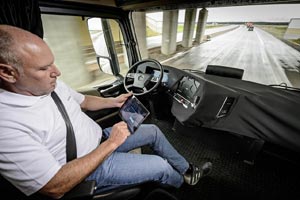Map: 1,885-Mile Autonomous Vehicle Highway Would Run From Canada to Mexico

 Debra Devine/Transport Topics
Debra Devine/Transport TopicsNorth Dakota native Marlo Anderson and the Central North Trade Corridor Association are working on a plan that would create a highway for driverless vehicles. Anderson, known by some as the "Guru of Geek," is the host of the talk show "The Tech Ranch." He has a love of technology that's tied to the prospect of driverless vehicles.
Anderson and a small team of others have been working since 2014 on a project they call the Autonomous Friendly Corridor. And actually, it already exists.
Kind of, anyhow.
The corridor would be the 1,885-mile-long U.S. Highway 83, which Anderson calls “underused.” The road runs through North Dakota, South Dakota, Nebraska, Kansas, Oklahoma and Texas. It crosses the northern border into Manitoba and touches the southern tip of the United States, ending at Mexico.
In northern South Dakota, U.S. Highway 83 runs along the Missouri River through Campbell, Walworth and Potter counties.
Under the current plan, the autonomous highway would be the first in the United States to allow driverless vehicles to transport cargo and humans.
"Our areas are all kind of landlocked. Our country was founded east to west so, generally speaking, trying to go north south is really, really difficult," Anderson said.
While a vehicle driving itself isn’t unheard of — Google, for example, has been using autonomous cars since 2009 — a specific highway for the technology to share the road with human-operated vehicles is.
FREIGHTLINER VIDEO: Self-driving truck unveiling
The association, a volunteer organization, is not alone in its thinking.
In January, U.S. Transportation Secretary Anthony Foxx announced that President Obama proposed $3.9 billion over the next 10 years to develop innovations for self-driving vehicles. The proposal has not yet gone through Congress.
MAKING HISTORY: Inspiration self-driving truck licensed for Nevada highways
U.S. Sen. John Thune (R-S.D.) chairman of the Senate Committee on Commerce, Science and Transportation, spoke last month at a committee hearing about the potential benefits of driverless vehicles.
“Full, self-driving cars will be here sooner than we think,” Thune said in his opening remarks. “We are facing an opportunity to expand [vehicle technology] while also making it smarter and safer."
Anderson’s ideal test run would be driving — or rather not driving — from Bismarck, North Dakota, to Pierre, South Dakota, on U.S. Highway 83. He hopes for a test run in 2017.
“That’s what we’re going for, but there’s a lot that has to be ironed out between now and then,” he said. “But it’s possible. The technology is there.”
PHOTO GALLERY: Freightliner's Self-Driving Truck
Only seven states have legislation regarding autonomous vehicles. North Dakota approved a measure last year allowing a study about which, if any, laws need to be changed to accommodate automated vehicles and to research how they could reduce traffic accidents and congestion and improve fuel economy.
Autonomous vehicles would obey the laws of driving, Anderson said.
“So it stops at stop signs, goes the speed limit,” he said.
While that might mean safer roads, it also means that “Americans need to be comfortable being passengers in their own vehicles,” as Thune put it.
Anderson has been a passenger in 20 or so autonomous vehicles.
“It’s like getting in the car with a new driver. It’s a little uncomfortable at first, but when you see how good they drive, you relax,” he said.
Thune also was a passenger in a driverless vehicle before the committee hearing. According to a news release, he has made it a priority for the committee he heads to examine ways for the United States to remain at the forefront of transportation technology.
“I welcome the efforts of groups and leaders that envision a role for states like South Dakota in developing autonomous vehicles, and I look forward to continuing to examine how this technology can help increase safety on our roadways. Strong state and local support for this new technology will not only help bring it to the market faster but will likely determine where innovators and entrepreneurs test and develop their products,” Thune said in a statement to the American News.
He continues to review the proposed autonomous highway, according to his communications director, Ryan Wrasse.
Meanwhile, Anderson and the corridor association are working toward creating a coalition of the six states and Canada.
“It’s pretty strong now between Canada and North Dakota,” Anderson said. “This will set a footprint for the rest of the country to follow."


